#wild wadi
Text
WILD WADI WATERPARK: EXPERIENCE THE AQUATIC MAGIC
Have you ever dreamed of diving into a world of thrilling water adventures and magical aquatic wonders? Look no further than Wild Wadi Waterpark, a premier water park located in the heart of Dubai. With its unique blend of adrenaline-pumping rides, captivating attractions, and enchanting surroundings, Wild Wadi offers an unforgettable experience for visitors of all ages. So, get ready to embark on a wet and wild journey through this aquatic paradise, where laughter, excitement, and pure joy await at every turn.
0 notes
Text
⚠️⏰Warning ⚠️ ⏰
Time is running out😥💔
Hello my friends and supporters of my campaign to save my life and the lives of my beautiful family.❤🥺
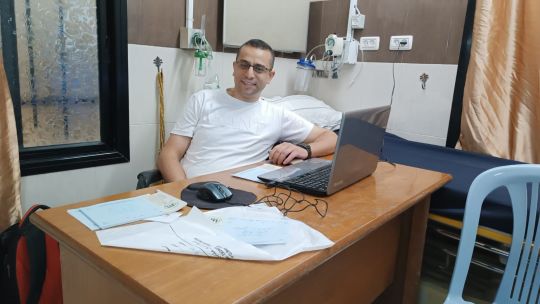
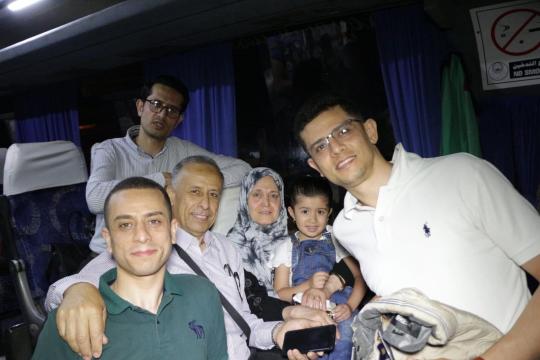
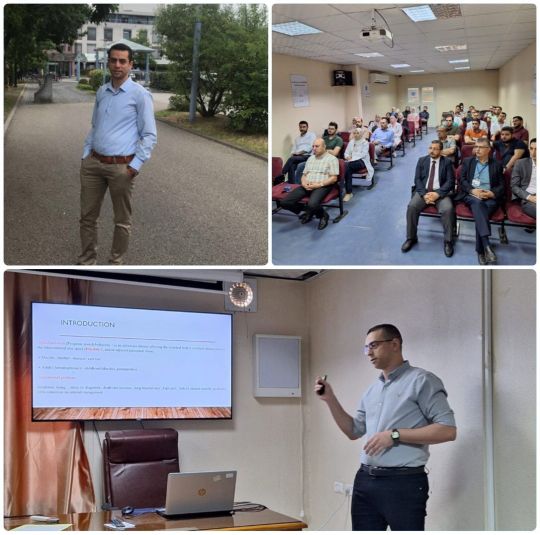
We have made significant progress in achieving our campaign, thanks to you, your support, and your generous donations. There is only a little more to go.😁✌💜
First, let me reintroduce myself: 😃
I am Dr. Mohammad Al-Deeb, an ER physician at Al-Shifa Hospital in the northern Gaza Strip 🩺🩸💉
before the brutal war forced us to leave our homes, memories, and workplaces, which have now become rubble after years of hard work to build them.😓😰
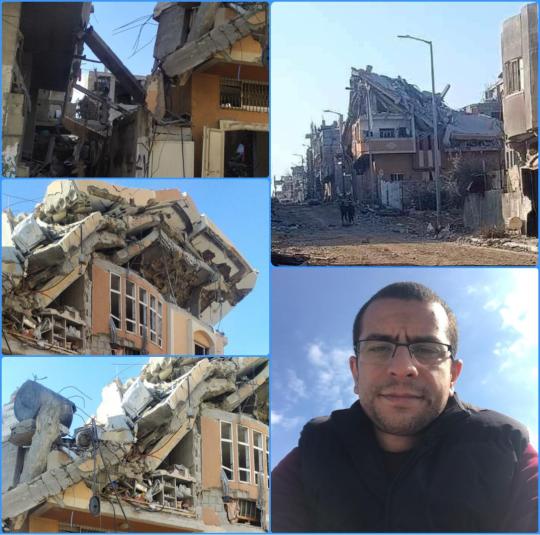
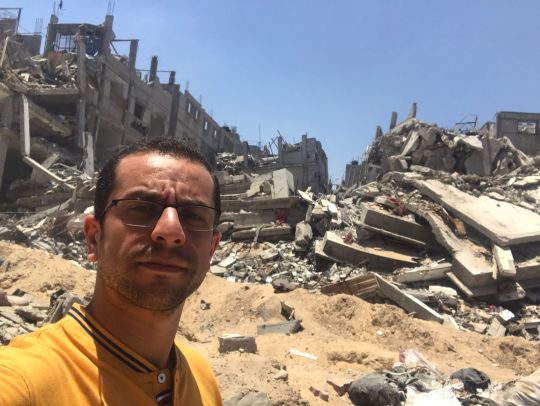
Our beautiful home, filled with cherished memories, holds in every corner the story of my childhood and youth💙, which my siblings and I dedicated our lives to building.😪😣


Now, I am displaced in the southern part of Wadi Gaza😪,
living with my family in a small tent that lacks even the most basic necessities of life—
no food, no water, no place to sleep, or even a place to personal needs.😓
I

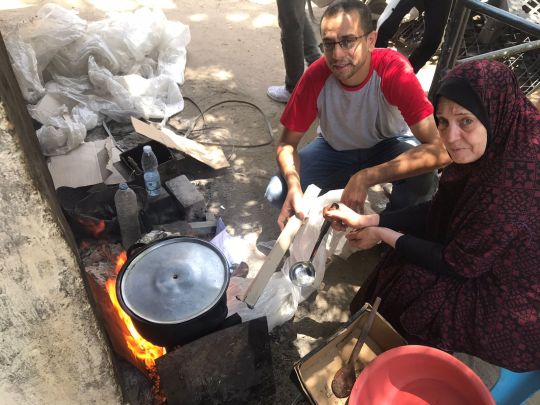
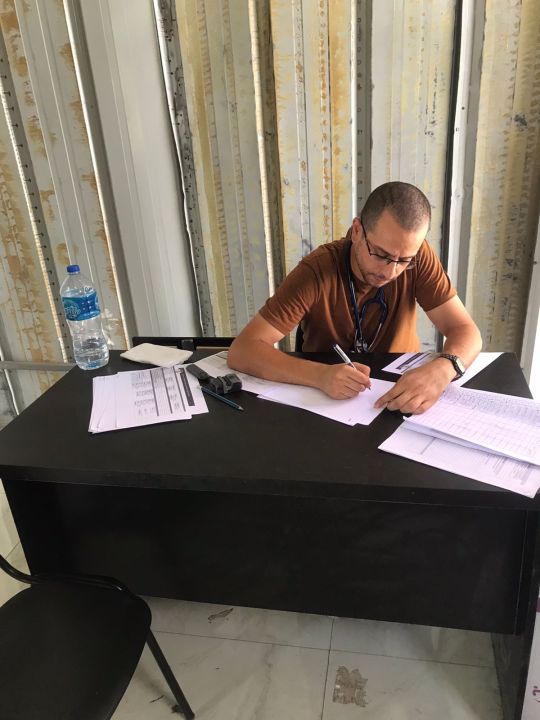
I ask for your continued support, as I have always relied on it.
We have achieved 72% of our campaign goal, and with your help and ongoing support, we will soon reach 100% of our goal.😁✌🙏🕊
Sar-
Dr. Mohammad Al-Deeb from Gaza.
Our campaign is vetted by
@90-ghost
@mangocheesecakes
@sayruq
@el-shab-hussein
@nabulsi (number 212)
Please help me by publishing my story 🥹🙏🏻
@timetravellingkitty @deathlonging @briarhips @mazzikah @mahoushojoe @sar-soor @rhubarbspring @schoolhater @pcktknife @transmutationisms @sawasawako @feluka @appsa @anneemay-blog @commissions4aid-international @wellwaterhysteria @mangocheesecakes @kyra45-helping-others @7bitter @tortiefrancis @ot3 @amygdalae @ankle-beez @communistchameleon @dykesbat @aristotels @komsomolka @neptunerings @riding-with-the-wild-hunt @heritageposts @watermotif @stuckinapril @mavigator @lacecap @determinate-negation @deepspaceboytoy @paper-mario-wiki @kibumkim @neechees @socalgal @chilewithcarnage @ghelgheli @sayruq @himejoshikaeya @rooh-afza
#free palestine#palestine#long live palestine#free gaza#gaza#palestine news#gaza genocide#i stand with palestine#palestine genocide#palestinian genocide#viva palestina#palestinian#free palastine#palestine will be free#pray for palestine#please boost#please reblog#please donate#help donate#help palestine#free free gaza#gazaunderattack#gaza news#end the genocide#stop the genocide#gofundme gaza#vetted gofundme#gaza gofundme#palestinian gofundme#gaza strip
11K notes
·
View notes
Text
Water Parks in Dubai
There are several water parks available in Dubai. With Travel Saga Tourism by your side you can enjoy any of them as per your preferences. Water parks like Atlantis Aquaventure, Wild Wadi Water Park, Legoland Water Park and Lagoon Water Park are some of the top water parks in Dubai. You can enjoy and have fun here with your family and friends. So, if you are looking for the tickets of the water parks in Dubai, then choose Travel Saga and make some beautiful memories.
1 note
·
View note
Text
https://activitylinker.com/city-tour/tour-details/Wild-Wadi-Water-Park-1740.aspx
Experience the ultimate aquatic adventure at Wild Wadi Water Park with exclusive tickets from Activity Linker! Nestled in the heart of Dubai, this thrilling water park offers an array of exhilarating rides, wave pools, and lazy rivers, perfect for all ages. Whether you're looking for high-speed slides or a relaxing day by the water, Wild Wadi has it all. Don't miss out on this incredible opportunity to create unforgettable memories. Book Wild Wadi Water Park tickets now through Activity Linker and enjoy seamless access to one of Dubai's top attractions. Dive into fun and excitement at Wild Wadi Water Park today!
#wild wadi water park dubai#Wild Wadi Water Park Tickets#water parks in dubai#best water park in dubai#dubai trip#dubai holiday packages#dubai tour packages#dubailife#dubaitourism#dubaitravel#dubai packages
0 notes
Text
Wild Wadi Waterpark Dubai: Offers, Rides, Attractions, and All You Need to Know
Dubai, a city known for its luxurious attractions and state-of-the-art entertainment facilities, has many precious stones, including the Wild Wadi Waterpark. It is an icon of a place offering fun and excitement to visitors of all ages who come here with promises of unforgettable experiences. In the heart of Dubai, Wild Wadi Waterpark combines wild rides, calm entertainment, and exclusive services. The park caters to everything for everyone, including thrill-seekers, children-oriented families, and those needing relaxation by the water. In this blog, we will explore everything associated with Wild Wadi offers, attractions, rides, and visitor information.

Overview of Wild Wadi Waterpark
History and Background: One of Dubai's most treasured locations is the 1999-opened Wild Wadi Waterpark. This park has an Arabian folklore theme, drawing from the stories of Juha, which are prevalent in the folktales of the area. This theme has been integrated throughout the park's architecture and rides, providing guests with an enjoyable experience.
Theme and Design: It is situated in the Jumeirah district, which is close to Burj Al Arab and the Jumeirah Beach Hotel. The architectural design incorporates traditional Arabian elements with contemporary water slides of high technological advancement. In this theme park, however, such a feature goes beyond just appearances but becomes its way of life, from the ride names to their decoration as well as the general ambience.
Wild Wadi Tickets, Offers and Packages
Seasonal Discounts: Wild Wadi always gives you seasonal discounts to increase the number of people visiting your place. They can range from low rates offered during non-peak seasons to holiday-specific offers. For example, in the summer months, their visitors usually find ticket prices going down or special packages that are inclusive of food and drinks.
Combo Packages: While trying to experience more of Dubai, Wild Wadi has bundled offers with other amusement parks in Dubai. These frequently ultimately cost less while offering broader exposure to what Dubai has to offer. Tickets to Burj Khalifa, Dubai Mall, and Dubai Aquarium form a typical combination.
Group and Family Discounts: This is why it is good to have a family or group outing at Wild Wadi, as there are various discounts for friends' group and family for wild wadi tickets, making it easier on the purse strings when bringing everyone along. Moreover, annual passes with unlimited park access for an entire year plus other benefits like discounted meals and gift shop items are also available.
Booking Tips: deals, it is best to make bookings beforehand through the Wild Wadi website or authorized ticket sellers. Check their official social media channels for park updates on promotions and discounts for a limited period.
Must-Try Rides and Attractions in Wild Wadi Water Park Dubai
Jumeirah Sceirah: The scariest ride in this park is the Jumeirah Sceirah; it is not meant for weaklings. This slide is 32 meters high, and speeds can go up to 80 km/hour. It starts with a spectacular view of the rest of the park, followed by almost falling vertically down, leaving your heart pounding.
Master Blasters: For water coaster lovers, Master Blaster offers something unique. These rides use strong water jets to propel riders up and down slides and chutes. Everyone has a unique layout with various drops, twists, and turns that combine to provide a thrilling experience.
Tantrum Alley: These rides have three tornadoes that provide a thrilling ride experience. One goes through twists, turns, and drops before being plunged into the tornado funnels while riding in a four-person tube at Tantrum Alley. It is an amazing feeling to be dropped into the pool below after spinning around.
Juha’s Dhow and Lagoon: This place is suited for families with small kids. Juha’s Dhow & Lagoon has more than 100 wet activities, including slides, water guns, and a gigantic dumping bucket, among many others, making it a large play area. There are many shaded areas where parents can relax while children enjoy themselves.
Wave Pool and Lazy River: Wild Wadi also has a big wave pool and a lazy river section for those who just want to unwind. The waves generated by the pool vary in size, thus providing an enjoyable break from everything else. A gentle round trip across the park is facilitated through Juha’s Journey, which is also known as the lazy river, allowing visitors to relax and enjoy the scenery.
Dining and Refreshments
On-Site Restaurants: There are many diverse types of restaurants in Wild Wadi, so there is something to suit every palate. The in-house restaurants serve dishes from a variety of regions, and these range from Middle Eastern food to favourite international cuisines. There are many options if you are hungry or just want something light.
Snack Bars and Cafes: There are various snack bars and cafes within the park where you can get quick snacks and drinks. These places provide sandwiches, ice cream, smoothies, and salads. They have strategically located them in various parts of the facility, ensuring that you do not miss any action when stopping for a meal.
Picnic Areas: If you prefer bringing your own food, then Wild Wadi has designated picnic areas where delicious There are tables with chairs placed within these sections for relaxing and taking refreshments at ease.
Visitor Information and Tips
Location and Getting There: The best place for you to find Wild Wadi Waterpark is in Dubai's Jumeirah District. You can get there fast by car, cab, or public transportation. Enough parking spaces are available for the driving customers. If you must take public transport, many buses stop close to the park, and the closest metro station is just a short taxi ride away.
Operating Hours: The park's hours of operation vary depending on the season, so it is best to check the Wild Wadi website for the most up-to-date information. The park opens late in the morning and closes early in the evening, giving visitors ample time to enjoy most attractions.
Safety and Accessibility: Wild Wadi has safety as its priority and therefore has always trained lifeguards to ensure that everybody is safe during their visit. That means that even those who use wheelchairs can navigate their way through using ramps and elevators placed along every path in the parking area. Additionally, there are separate areas set aside just for people with disabilities, allowing them to enjoy other aspects of the waterpark as well.
What to Bring: What should not fail you is your sunscreen, swimwear, and change of clothes when planning your trip here. You may rent towels, and lockers are also there, where you will secure your items as you go on rides safely. Always bring flip-flops or water shoes so your feet will not burn on hot surfaces.
Dress Code and Etiquette: The management of Wild Wadi enforces a dress code to ensure everyone's safety and comfort. Swimwear must adhere to modesty requirements suitable for a family environment, which enhances community building in this place. Additionally, it is never acceptable to wear indecent clothing or to be in any way nude here. Apart from these rules, guests have no choice but to follow others, such as not running in wet areas and obeying lifeguards.
Testimonials and Reviews
Visitor Experiences: A lot of visitors praise Wild Wadi as a park with a wide range of attractions and an atmosphere that is suitable for families. A visitor once remarked, "The greatest place for a family outing is Wild Wadi. We all had a great time on the Master Blasters, but the kids enjoyed Juha's Dhow and Lagoon."
Ratings and Recommendations: On travel websites, Wild Wadi always receives high ratings regarding their tidiness, safety measures, and assortment of rides. Frequently, they suggest arriving ahead of others to avoid the crowd or having the other option of dining in the park to have a full day of fun and relaxation.
Conclusion
Wild Wadi Waterpark is a landmark attraction in Dubai that promises visitors unforgettable moments across all ages. It satisfies thrill seekers and families who want to enjoy their day with its breathtaking rides, calm features, and varied eating places. Its rich Arabian folklore theme gives it a charm that makes every visit memorable. To guarantee the best trip of your life, purchase your tickets through CTC Tourism to take advantage of exclusive discounts and packages. Whether you are sliding down Jumeirah Sceirah or floating along the lazy river, Wild Wadi ensures a day filled with excitement and memories.
0 notes
Text
Unveiling Wadi Mujib: Your Guide to Jordan's Epic Canyon Adventure
Wadi Mujib, also known as the "Grand Canyon of Jordan," is a breathtaking natural landmark that carves its way through the heart of Jordan. It's a paradise for adventure seekers, offering unparalleled hiking experiences within a stunning landscape. This guide equips you with the essential knowledge to plan your unforgettable Wadi Mujib adventure from Amman, Jordan's capital city.
Unveiling the Wadi Mujib Experience
Wadi Mujib boasts three distinct hiking trails, catering to various experience levels:
Wadi Mujib Siq Trail: This 2-3 hour trek is the most popular and least demanding. It winds through the canyon, with hikers wading through ankle-deep to waist-high waters. The trail culminates in a picturesque waterfall, offering a refreshing reward.
The Canyon Trail: This moderately challenging 3-4 hour hike takes you through a series of hills before descending to the Mujib River. You'll then conquer a 20-meter waterfall with the help of expert guides and explore the rich biodiversity of the canyon.
The Malaqi Trail: Calling all experienced adventurers! This challenging 5-7 hour trek is the ultimate Wadi Mujib experience. It follows rugged terrain before reaching the confluence of the Hidan and Mujib Rivers, aptly named "Malaqi" (meaning "confluence" in Arabic). Prepare for an exhilarating adventure with a refreshing break for swimming halfway through.
Planning Your Wadi Mujib Adventure
Here are some key pointers to ensure a smooth and enjoyable Wadi Mujib experience:
Embrace the Water: Strong swimming skills are essential. While life jackets are provided, unforeseen situations can arise.
Pack Smart: Wear comfortable, quick-drying clothing and sturdy shoes with good traction. Pack a waterproof bag for valuables and consider bringing a ziplock bag for extra protection. Reliable lockers are available for safekeeping belongings.
Minimum Age Requirement: The minimum age for entering Wadi Mujib is 18 due to the potential dangers associated with the trails, especially during heavy rain.
Reaching the Adventure: Public transportation isn't available. Renting a car from Amman allows for flexibility and scenic exploration. Alternatively, reputable travel agencies like Wonders Travel and Tourism offer tours that include transportation and entrance fees.

Beat the Crowds: Aim for an early arrival (gates open at 8:00 AM) to avoid peak season crowds, particularly during the April-November tourist influx. Early mornings also offer cooler temperatures for the initial portion of the hike.
Weather Matters: Wadi Mujib is closed during rain and following heavy downpours for safety reasons. It's generally open throughout the summer months due to minimal rainfall. Check the forecast before your trip to avoid disappointment.
Expert Guidance: Hiring a guide is mandatory for the Canyon and Malaqi Trails. Even for the Siq Trail, consider a guide for added safety and a more enriching experience.
Post-Adventure Relaxation: After conquering Wadi Mujib, unwind at the Dead Sea, located nearby. Float effortlessly in the world's saltiest water body and indulge in the therapeutic Dead Sea mud. Wonders Travel and Tourism can create a seamless itinerary combining your Wadi Mujib adventure with Dead Sea indulgence.
Your Gateway to Adventure
Wonders Travel and Tourism is your one-stop shop for crafting a remarkable Wadi Mujib experience from Amman. We offer a variety of tour packages encompassing transportation, entrance fees, and expert guide services. Let us handle the logistics while you focus on creating unforgettable memories in Jordan's natural wonder.
Contact Wonders Travel and Tourism today to book your Wadi Mujib adventure and embark on an unforgettable journey!
#Wadi mujib wild jordan#Mujib adventure centre#Wadi mujib jordan pass#Wadi mujib visitor center#Wadi mujib from amman
1 note
·
View note
Text

Theme Parks in Dubai are one of a kind, which has something for everyone from kids to adults.
#Best Dubai Theme Park#Dubai Theme Parks#Aquaventure- The Ultimate Adventure Waterpark#Wild Wadi Water Park- Go Wild#Ski Dubai- A Winter Wonderland#IMG Worlds Of Adventures- Dive Into Adventure#Legoland Dubai- The World Of Legos#Bollywood Park- For Bollywood Fans#Motion Gate- The Biggest Hollywood Park#Dubai Global Village- An Ideal Family Place
0 notes
Text

wild wadi water park
0 notes
Text
Wild Wadi Water Park Offers
Going 2 Dubai provides Wild Wadi Water Park Offers to your friends and family to enjoy the activities in Dubai. There is an inclusion of rides, slides, and other fun involving activities with the best offers. If you have any query related to our offers then feel free to contact us through our website or call us on 9888302868

0 notes
Text


€4,004 raised of €5,000 goal
Omar made an account here on tumblr, please follow him if you can
@omarwadiAsk , he is 1k away from having enough to evacuate his sister that was injured once the border re opens. This campaign is vetted by me, please help us by sharing.
Tagging for reach, let me know if you don't want to be tagged.
Thank you!!
@buttercuparry @appsa @malcriada @palestinegenocide @sar-soor @akajustmerry @annoyingloudmicrowavecultist @feluka @sayruq @tortiefrancis @flower-tea-fairies @tsaricides @riding-with-the-wild-hunt @visenyasdragon @belleandsaintsebastian @ear-motif @kordeliiius @communitythings @brutaliakhoa @raelyn-dreams @troythecatfish @theropoda @4ft10tvlandfangirl @queerstudiesnatural @northgazaupdates2 @skatezophrenic @awetistic-things @baby-girl-aaron-dessner @nabulsi @el-shab-hussein @timetravellingkitty @transmutationisms
@90-ghost @killed-by-overthinking @appsa @feluka @
@fairuzfan @ibtisams @fallahifag @vakarians-babe @sar-soor @appsa @buttercuparry @turian @timetravellingkitty @schoolhater @magnus-rhymes-with-swagness @malcriada @jezior0 @neptunerings
@irhabiya @wellwaterhysteria @deepspaceboytoy @post-brahminism @junglejim4322
@kibumkim @neechees @mangocheesecakes @kyra45-helping-others @7bitter
@tortiefrancis @toiletpotato @fromjannah @omegaversereloaded @vague-humanoid
@evillesbianvillain @aristotels @komsomolka @riding-with-the-wild-hunt
@heritageposts @kahin @tododeku-or-bust @watermotif @stuckinapril
@socalgal @chilewithcarnage @ghelgheli @sayruq @northgazaupdates2
#free gaza#free palestine#gaza#palestine#save gaza#gaza genocide#gaza strip#gazaunderattack#palestine genocide#save palestine#war on gaza#help gaza#all eyes on palestine#i stand with palestine#from the river to the sea palestine will be free#fundraising#signal boost
377 notes
·
View notes
Note
Ever heard of the east african bronze age, land of Punt
I did not! But now I do and I find it very very cool!!
(Punt 2500–980 BCE)

"Land of Punt was an ancient kingdom known from Ancient Egyptian trade records. It produced and exported gold, aromatic resins, blackwood, ebony, ivory and wild animals."
------------------------------------------------------------------------------
(Cool Article about Punt)
Punt was likely located in present-day Puntland State of Somalia or, at least, North West Somalia!

"...he country is best known from inscriptions regarding Queen Hatshepsut's famous expedition in 1493 BCE in the 18th Dynasty of Egypt. This exchange between the two countries brought back living trees to Egypt, marking the first known successful attempt at transplanting foreign fauna. "

(The possible route taken : Wadi Tumilat)
------------------------------------------------------------------------------
"Punt came to hold a deep fascination for the Egyptian people as a "land of plenty" and was known as Te Netjer, the land of the gods, from which important goods came to Egypt."
In the 12th Dynasty (1991-1802 BCE), Punt was immortalized in Egyptian literature in the Tale of the Shipwrecked Sailor!
videos: (Audio Book online I found , more story like)
(More faithful video to the original story, also read in egyptian, very cool)
"Punt is purposefully chosen in this story as the mystical land on which the sailor washes up because it was already understood as a faraway realm of exotic goods and generous people."

(A friendly game of Senet)
24 notes
·
View notes
Text


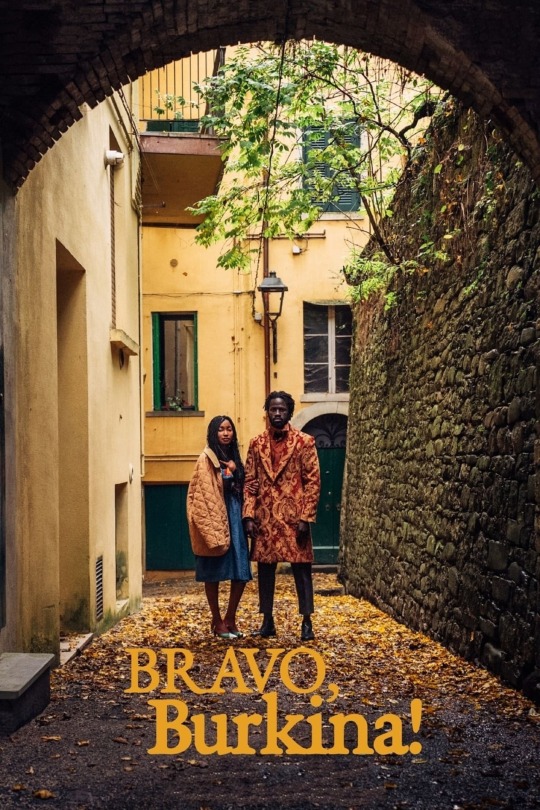





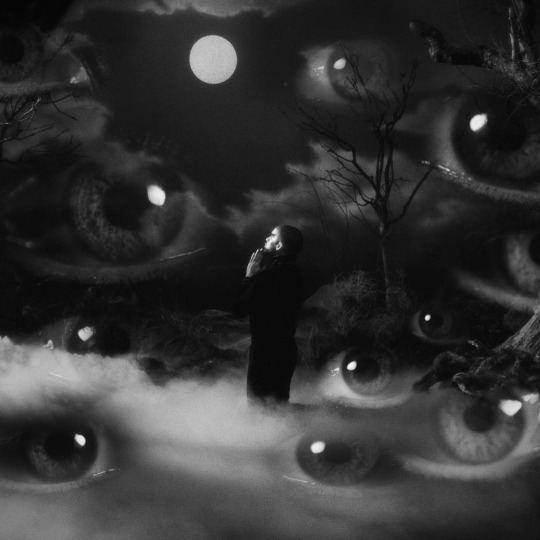

top nine first time watches of 2023 tagged by @dizzymoods
this accidentally posted while I was working on alt text during a work break, so not everything is complete but the photos align with the text below.
#1 top film and theater experience of the year) watching Fremont in Fremont as a former Fremont resident
(2023, Babak Jalali)
2) Animalia (Parmi nous) via Sundance streaming
(2023, Sofia Alaoui)
becomes a truly mystical experience. like ppl are gonna make comparisons with certain Soviet films but let this one stand on its own pls
3) Bravo, Burkina (2023 , Walé Oyéjidé) via Sundance streaming
4) Cry of the City (1948, Robert Siodmak) at Noir City.
My fave of the films I was able to catch at the various festivals here throughout the SF Bay, though for top experience I was grateful to finally get to the Castro Theatre for two SF Silent Film screenings before Another Planet changes the seats...
5) The Blazing Sun (Siraa Fil-Wadi) (1954, Youssef Chahine)
screencap found here
6) There is No Evil (Sheytân vojūd nadârad)
(2020, Mohammad Rasoulof)
The "Bella ciao" scene alone is iconic! Yet it is just one moment within a devastating and strident cinematic statement.
7) And Then We Danced (Da chven vitsek'vet)
(2019, Levan Akin)
If you have had any rigorous dance training, you can tell how good this film is- down in the details, telling story through movement.
8) Journey to Epcot Center: A Symphonic History
(2023, Defunctland/Kevin Perjurer)
screencap found here
I SUPPORT KEVIN IN ALL HIS ENDEAVORS
9) Baticano (2023, Stillz)
Imagine my surprise when I turn my TV and one of the best modern homages to German Expressionism and 30's-50's Western studio horror, starring Bad Bunny as Nosferatu and Steve Buscemi as a "mad scientist." The depths of the black parts of the screen alone... pure! black! contrast! Not the telltale flat digital black-gray!
Benito may be no Max Schreck, but Stillz was on a roll for the rapper's videos last year, and now I feel less... embarrassed? that I was repeatedly hypnotized by the hyper-Coachella vibes of the "Where She Goes" video... Stillz has skills.
Or at least knows how to shoot what I like.
Runners-up are many, but I want to highlight:
a) a small but solid run of horror viewing in October, from the adrenaline of As Above So Below to all the subtext James Whale snuck into The Old Dark House. Doctor Jekyll and Sister Hyde should be counted as one of the best Hammer horrors imo. On the borders of the horror were Mother Joan of the Angels, La Llorona, and the more witchy fantasy The Five Devils.
b) sidestep into Indonesia with May the Devil Take You, which may not be at the tip top levels of Impetigore but still a uniquely wild ride. Headshot sets standards on the action side, and you can definitely spot Gareth Evans' Indonesian industry training in his English folk-action-horror foray Apostle.
4 notes
·
View notes
Text
SHMOT
By Agnes
January 11th, 2024
Well, I’m a little late with this week’s drash. I was sort of scattered last week, but still – I spent time with the parsha, Shemot, the beginning of a whole new book — and all I felt was silence. Which is a little wild, right? Since so many iconic moments happen in this first few chapters of Exodus.
We’ve got a new pharaoh who decides to persecute the Israelites, we’ve got midwives saving babies, we’ve got Moses and Pharaoh’s daughter and the burning bush and I-Will-Be-What-I-Will-Be. We’ve got exile and marriage and the people crying out and snake tricks and leprosy tricks and blood tricks and brother Aaron and the launching of an entire political movement.
And it’s not like there was nothing to say. There’s everything to say. There is a Red Sea of commentary and a Jordan River of theology and flowering wadi after flowering wadi of relevant questions about justice and violence and political regimes and belonging. I had some thoughts and I wrote them down but in my heart I felt… silence.
Large portions of my life, including my life now as a writer, revolve around coming up with things to say. I can do that. And sometimes the muscle that comes up with things to say feels like the smallest most marginal muscle in the body.
This morning I got up before sunrise and shoveled snow off my friend’s car. The sky was light by the time I left, all the snow that fell this weekend glowing, and there was a gray mist hanging over the black pavement and the white and brown farmhouses. I drove forty-five minutes down country roads to the nearest train station and rode into New York. It was raining and I had a little time to kill so I stopped into a gallery.
In one room were these beautiful erotic sketches from the fifties, a few paintings and collages. There was a film showing in the back – do you know this film, Fuses, by Carolee Schneeman? It’s a collage of footage shot on 8mm, and she first screened it in 1967. Schneeman is having sex with her partner James, and their cat, Kitch, appears sometimes. There are windows and flashes of light, blurred forms, and moments of clarity. The bodies move and touch and grasp and the camera moves, too, and dances and blurs. The colors are blue and gray and there is no sound.
A few people came in and out of the office in the back but mostly I stood there in my yellow-beige jacket and pink hat, black dripping umbrella in hand, and watched the light move on soft bodies and flicker through tree branches and the cat came in through the window. There is something steely and direct about the film but it is mischievous, too, without being cute. Mostly it is joyful and tender. It is easy and open and just right.
I want my life to involve lots of afternoon sex by an open window. I want to lie in blankets, watch the cat wander the apartment. I want the smell of cooking from the kitchen.
That is what I am thinking as I am watching this film by Carolee Schneeman.
A midrash tells us that many of the Israelites stopped having sex with their partners when the edict came down that boy children would be thrown in the Nile. Husbands and wives separated, because, the midrash says, what was the point? It fell to the women, we learn, to seduce their husbands again.
In the other part of the gallery was a show of newer paintings by an artist I don’t know. Many of them meticulously rendered images of foliage, leaves on top of leaves on top of vines on top of branches. I stopped in front of one painting, maybe three feet tall, two feet wide. I stood close enough that it filled my whole field of vision. In the painting is a dense stand of tall trees. They resemble the trees in the forest I have been walking through every day for the last three months. You can see a tiny sliver of lurid teal sky at the very top of the painting but mostly it is just tree beyond tree beyond tree, and they’re all in bright colors. One tree in the foreground is an electric blue — the blue of irises in spring, the blue of the eyes of a woman I knew once in Lebanon. There are green trees beside it, one the green of fresh olives from the Whole Foods olive bar and one the green of someone’s LL Bean backpack circa 2003. Beyond those trees are trees in golden yellow and deep purply crimson and rich brown like milky black tea and a few in vibrating persimmon orange and salamander red and more blue, but deeper blue, blue like you only see in the sky beyond some saint in a Tintoretto painting.
I stood so close to the painting that I felt the colors overtake my body. It was like they flooded my eyes and had nowhere else to go so they spilled down my back and sloshed up my legs and held me around the waist. And I felt so grateful. I felt so startled and lucky and held.
Then it was time for me to go. And headed north, across Canal Street, I rode an elevator to the seventh floor of an office building and rang the bell on a door next to a realtor’s office and the doctor I’d come to see’s sister opened the door and pointed me to the middle room. And then the doctor came in and asked what was wrong and how long had it been since I’d seen her — a year, right? Maybe two years? I fell in the woods, I said. It was about a month ago. I hurt my leg. I don’t live in New York City anymore but I came down to see her. She said Ahh, okay. Yes, I wondered. Take your pants off, she said, and lie down. I asked how her father was, I remembered he was quite old and she did acupuncture on him every night when she went home. She told me he died last February, and I said I was sorry, and she said yes, it’s very sad. She asked where it was I’d hurt myself and I pointed to a place behind my knee and then she lifted my shirt and pressed on a place on my lower back and I went, Oof! And she went, Right? And I went yes, and as she started to put all these needles in me I felt like I wanted to cry because it is an extraordinary thing when you have been hurting somewhere for a month and you come to someone for help and they teach you about another, perhaps deeper place where you are hurting.
An hour and a half later, after the needles and a good long stretch of her digging her sharp elbow hard into my back and leg, up and down, up and down, and suctioning glass cups all over my lower body that tugged madly on the skin and muscle and left big bruises I was sitting back outside with her sister and eating the raisin pastry she’d given me and drinking the coffee she insisted I sit and sip (are you rushing off somewhere?) and looking at the light green plants under the windows and the deep red Buddha on the altar. I looked around the office and tried to remind myself to drink slowly and asked the doctor when she popped back out from one of the other rooms if it was okay to be doing yoga. And she said maybe, maybe, what kind of yoga, you have to be careful, she said, you need to find a physical therapist when you go back to California. And then the doctor’s husband was there, and he offered me another pastry, and the doctor was joking that he had come for his acupuncture but he was afraid of needles, and it had been a stressful month for him, his blood pressure was a little high.
And I thought about how God says to Moses that Pharaoh will not respond to Moses’s requests, or to the magic tricks he learns with the snake and the leprosy and the blood. Pharaoh will only respond to a greater might, God keeps saying this, Pharaoh will only respond to a greater might, yad chazakah, which literally means a strong arm, and I thought about the doctor’s elbow, and I wondered how many people use their elbows as much as this doctor does on a day to day basis. What a miraculous part of the body, the elbow! And so underappreciated. Maybe God’s strong arm, and greater might, is an elbow.
And I looked at the green plants and the red Buddha and I thought, I want my life to be very simple. I want to work hard and care for things and be around the people I love.
And when I finally left it was still windy and rainy and everything looked gray. And I heard it was snowing upstate, and my friend was wondering whether it would be safe to drive home from the train station, whether I should find another place to stay tonight and I said hm, and I would ask another friend who lives closer by.
Why am I telling you all of this?
One of the things I read last week when I was trying to find my way out of a silence was a commentary in the Zohar. It’s a commentary on a line that is technically in the next parsha, but I think it’s still relevant.
I’m going to read you a little bit of it, if that’s alright.
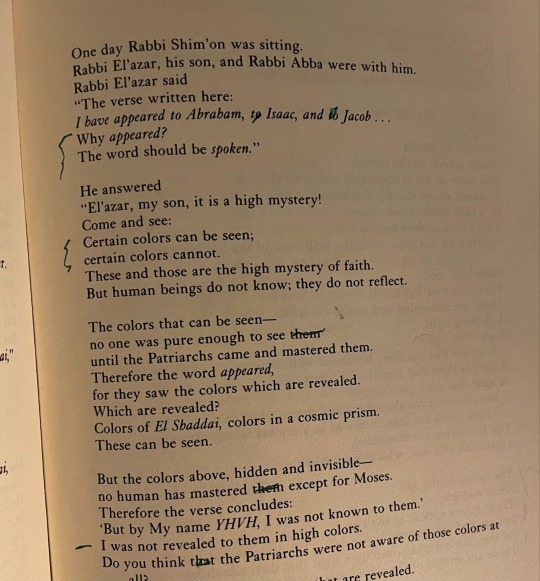
And so all week I have been thinking about colors. And what colors might be calling to me out of the parsha. And I didn’t know what to do with that, what to say about it , but I felt like it was important.
But now I think I wasn’t ready to know, and that certain things had to happen first. I had to sit with the silence a while, and feel a little sad, and stressed, and what would I write for the podcast? I had to notice that the little muscle I have trained for years to come up with things to say on command — that this muscle was twitching and maybe a little injured. And then I had to make a wildly inconvenient trip to see a doctor about the injury in my leg. And I had to have time to kill on a rainy day and wander into a gallery and find myself in front of this painting of bright and intricate trees and to feel something like the essence of color completely overtake my body. And remember what it’s like to feel startled by life, and overtaken, and remember that I want to approach Torah from that place, or let Torah approach me. And I had to remember sex by an open window and feel an intense dawning clarity that even though I have been floating for several months now I know, deep down, exactly what I want my life to be. I had to text with my friend about the snow, my friend whose apartment is full of plants and who cares for them so well, I had to find out about where I might stay the night. I had to take a long trip so that a sharp and mighty elbow could press into the parts of me that hurt.
We are starting a new book. It’s a book about becoming a people. It’s a book about how painful and difficult it can be to love a people, specific people, and the divine. It’s a book about rushing and ingratitude and the pains we don’t even notice because we are focused on the wrong injuries.
I wanted to tell you all this as a kind of a prayer. When we hear silence, let us acknowledge the silence. Let us be tender with ourselves, let us be slow. Let us not grasp anxiously after this Torah. Let us let it find us.
2 notes
·
View notes
Note
I saw your post on rhinoceros distribution in the Mediterranean, and wondered If you ever came across any mention of modern northern giraffes in western Asia in historical times? Ive seen it mentioned In a blogpost before without sources but never could find anything reputable and was curious if There was anything reputable.
Sometimes claimed to be the “largest animal rock art” image on the planet, “one of the finest examples of rock art in the world,” is the so-called Dabous giraffe petroglyph. The rock art is located in the Tenere region of the Sahara (within the borders of modern-day Mali). The art is estimated to be between 7,000 and 10,000 years old (5000 BC to 8000 BC range). The artists were either Kiffian or the later Mesolithic culture known as Tenerians. Today, this is Tuareg territory.
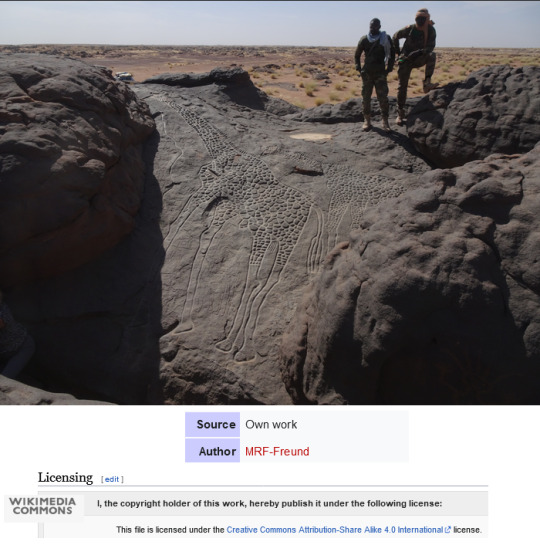
Paleontology, archaeology, taxonomy, etc? Environmental history before the Holocene? Not my specialties. Out of my league.
But I think that we can confidently say that wild giraffes were not present anywhere in Southwest Asia within the past 10,000 years. I, like you, haven't ever yet seen reputable sources for giraffe in the region in this time period. They were in North Africa, though.
We know with certainty about Asian elephants living in Assyria and eastern Anatolia, through physical remains, detailed records, etc. We know with certainty about tigers in Mesopotamia and lions in Persia, because they were still alive less than 100 years ago. Rhinos are conspicuously absent in records of the ancient Fertile Crescent. But at least rhinos existed, independently and separated, in both Africa and South Asia. But giraffes, after the end of the Pleistocene? Not so.
Still, just as we have petroglyphs of rhinos in the Sahara, we also have petroglyphs dating from the Holocene of giraffes in Morocco, Algeria, Libya, and Egypt.
The historical (19th century) and current (2018-ish) distribution range of giraffes:
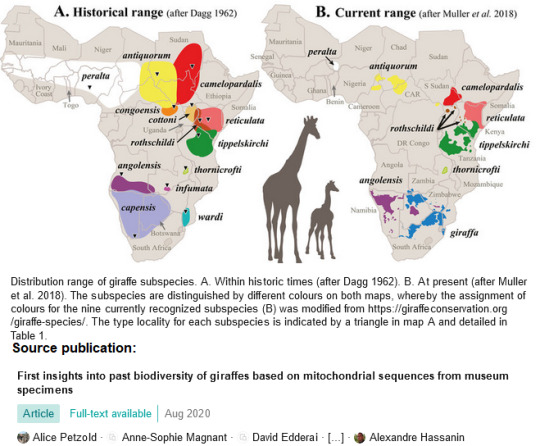
Potential Holocene distribution range of the giraffe within this region:
(1) Giraffe petroglyphs in the Eastern Desert of Upper Egypt suggest that giraffes were present in predynastic times (Holocene, perhaps until 3000 BC, or 5,000 years ago). The Nubian giraffe subspecies may have had continuous range in the Eastern Desert via the Red Sea coastline from the region known to ancient Egyptians as Punt; also in predynastic times, the Nile valley itself, through Nubia, might have been home to giraffes.
(2) Also within the borders of modern-day Egypt, there are more giraffe petroglyphs from the Holocene at the Gilf Kebir wadis; the Gilf Kebir site, like much of the Sahara, would have been much less arid during the Green Sahara climatic period, which appears to have lasted until 4000 BC, suggesting giraffes may have been widespread across the Sahara until that date.
Giraffes may also have lived (3) near the Mediterranean coast by way of the Atlas mountains (in Morocco, Algeria, and Tunisia). This is supported by the existence of giraffe petroglyphs in the Anti-Atlas of southern Morocco. Some distribution maps also suggest giraffes (4) may have lived near the Mediterranean on the Cyrenaican coast of Libya, which could’ve been populated by giraffes via the use of the Tibesti and Ahaggir mountains. But I don’t know where the Cyrenaican giraffe evidence comes from?
What we do know is that the giraffe, during the Holocene, was present in the Tibesti, Ahaggir, Tassili n’Ajjer, Messak, and Gilf Kebir regions of the Sahara in North Africa . Whether this allowed them to maintain populations in the Atlas mountains or Cyrenaica is unknown, despite W!kiedia and hobbyist references to “giraffes in Morocco until 600 AD.”
Giraffe petroglyphs from the Messak region of Libya:
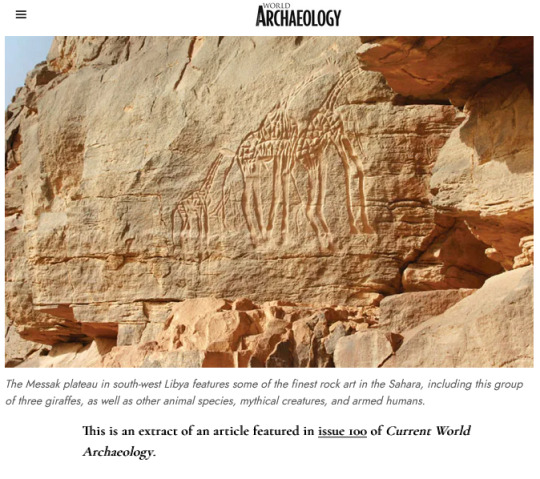
So, again from working-class GIS (MSPaint), my guess at giraffe distribution in the Holocene, using petroglyphs and known environment during the Green Sahara period:
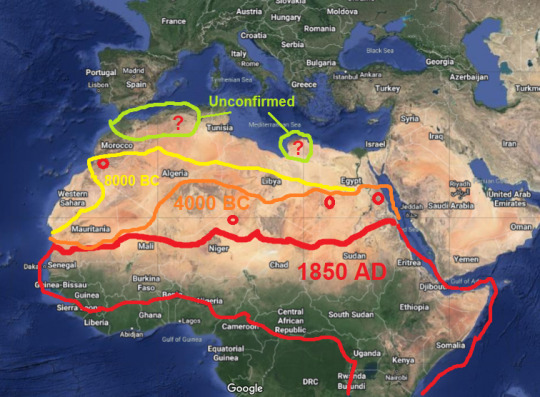
The red circles indicate giraffe petroglyph sites.
---
Quick run-down of what we know:
- I’ve only seen one reliable reference to genuine evidence/physical remains of Giraffa from relatively “recent” Asia: modern/extant Giraffa camelopardalis remains recovered at Latamne in Syria. But the remains seem to be from the Middle Pleistocene, maybe over 250,000 years old, maybe closer to 1 million years in age. (I'm not sure, I don't know anything about this site.)
- There are several large, clear, and/or conspicuous giraffe petroglyphs in the Messak plateau region of modern-day Libya. The Wadi al-Ajal site, in particular, features impressive giraffe art.
- Holocene giraffe remains/petroglyphs have been found at Wadi El Akhdar and Wadi El Bakht in Gilf Kebir of modern-day Egypt.
- Giraffe petroglyphs also exist in the Eastern Desert of Egypt.
- Among 32 panels at the petroglyph site known as Taheouacht-2 in Morocco are the images of two rhinos, and also two giraffes apparently being hunted by human figures.
- The Dabous giraffe petroglyph of the Tenere region (within modern borders of Niger) proves giraffes were known to Kiffians and/or Tenerians in the region as late as 8000 BC to 5000 BC. (The Dabous art is often described as one of the most awe-inspiring, precious, important, etc. pieces of rock art on the planet.)
- There is no doubt whatsoever that Egyptians were very familiar with giraffes. But they appear mostly in the context of tribute or import from Nubia, Kush, Punt, etc.
- I’m pretty sure(?) that giraffes also appear in the rock art of Tassili n’Ajjer in Algeria. At least, elephants and rhinos appear in this art. The petroglyphs may date to as late as 6000 BC or 4000 BC.
- “Giraffe lived in Morocco until 600 AD” is a hard claim to substantiate. Various websites and resources make the claim, and they cite Wikipedia, which itself cites one line in a giraffe book, but the publicly-accessible view of this note/citation doesn’t specify where/how this was determined. (Maybe the book itself contains more/better info on the source of this claim?)
- Giraffa sivalensis is one of the only relatively better-understood extinct early giraffes, since the various others are unclear and taxonomically suspect (Giraffa jumae, stillei, priscilla, gracilis, ppygmaea and punjabiensis). However, Giraffa sivalensis is presumed to have been recovered from the upper Siwalik deposits dated to something like 2.6 to 0.6 million years of age. So??? This is the same region which yielded remains of some Pliocene and Pleistocene creatures like Asiatic ostrich lineages, some mastodons, and Crocodylus palaeindicus. “Giraffes and humans together in Europe!” Big difference between Homo erectus and archaic Giraffa sivalensis one million years ago, and any interaction between humans-with-domesticated crops of the Holocene only within the past 12000 years.
---
Using current taxonomy and current known distribution range, the subspecies present in Nubia/Axum and presumably Egypt/Red Sea would be Giraffa camelopardalis camelopardalis, the “Nubian giraffe.” The subspecies designation of Saharan giraffes might be more unclear, since both West African and Kordofan subspecies currently live nearby,but the West African giraffe known as Giraffa camelopardalis peralta today lives closest to the Dabous petroglyphs, Ahaggir, Tassili n’Ajjer, and Atlas regions.
Regarding the West African subspecies, according to the Giraffe Conservation Foundation, excerpted from their online site: “At the beginning of the 20th century the West African giraffe were widely distributed, from Nigeria to Senegal, but by the mid-1990s only 49 individuals remained in the whole of West Africa. These few survivors are now formally protected by the Niger government and their numbers have risen to more than 600 individuals. However, their future is still of great concern [...]. No other large wild mammals occur in this area [...].” Regarding the Nubian subspecies, also from GCF’s site: “The estimated number of Nubian giraffe is approximately 3,000 individuals, which includes the genetically identical formerly recognised Rothschild’s giraffe. At present, fewer than 175 occur in western Ethiopia, less than 450 in eastern South Sudan, approximately 700 in Kenya, and more than 1,800 in Uganda.”
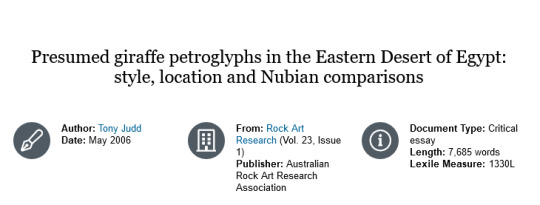
I’d guess that the Nubian giraffe was apparently present northward along the Nile, and eastward toward the Red Sea near the northern border of Eritrea at the historic site of Punt, accounting for the giraffe petroglyphs in the Eastern Desert. Did G.c. camelopardalis live farther north past Nubia into Upper Egypt? Perhaps. But they were probably extinct by the time of Old Kingdom. Other records from the Old Kingdom do describe frequency of encounters with wildlife in Nubia. Even references to elephants in Nubia may actually reflect possible trade or transplant from even farther upriver. Did G.c. camelopardalis live farther north along the Red Sea coastline into the Eastern Desert of Egypt? Maybe. But there aren’t records and the same pressures of the Nile valley of Upper Egypt (human presence, hunting/collection, regional aridification following Green Sahara) were present. So: Probably no giraffes in Egypt proper after Old Kingdom foundation.
The subspecies G.c. peralta (today confined to southern Niger) is the one to watch, I’d say. And like the white rhinoceros (the living Ceratotherium simum and Ceratotherium cottoni), the giraffe is desert-tolerant and local populations can thrive in deserts. Specific populations of African savanna elephant can also thrive in deserts. Using ancient distribution of white rhinos, ancient distribution of elephants, and early Holocene rock art as indicators, I’d guess that, at the time of early dynastic Egypt, the current West/North African subspecies G.c. peralta was present in the Tibesti, Ahaggir, and Tassili n’Ajjer mountains.
It’s possible that they were in the Mediterranean, most likely Atlas Mountians from northern Mauritania, through Morocco and northern Algeria. They also could have been present in Cyrenaica.
But then, if giraffes were present in Cyrenaica, where are the records or literature mentions? Phoenicians, Greeks, some Egyptians, and Romans all settled in Cyrenaica, but the giraffe is mostly only mentioned as a transplant in the Mediterranean, in records about African gifts, menageries, tribute, etc.
Giraffe petroglyphs at Gilf Kebir in modern-day Egypt:
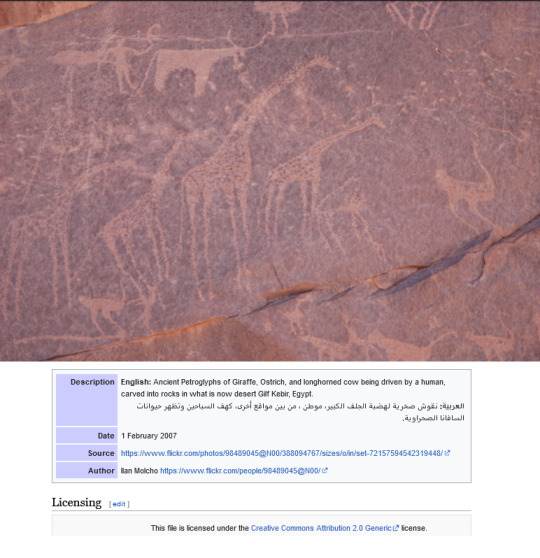
20 notes
·
View notes
Note
11 & 22 ?
11. Something you want to do again next year?
tie between go off into the wild for some time in the winter and watching meteor shower on the beach with almost no light pollution! both amazing and with so many stars
22. Favorite place you visited this year?
this is too hard to pick but i’ll go with wadi al hitan since i’d seen nothing like it before
thank you!!! 🥰
from end of year asks
2 notes
·
View notes
Text
"The oak and pistachio belt was perhaps the inspiration for the biblical land of milk and honey, where an astonishing range of edible plant foods could be harvested. The people who lived there favored territories that lay on ecotones, the boundaries between contiguous ecological zones, where they could exploit different foods at different times of year. Unlike their predecessors, many groups now used caves year round, presumably because they offered shelter from the rain, and places where plant foods could be kept dry. Plant foods - the wild grasses of spring and early summer, and the acorn and pistachio nuts of fall - were so abundant that many groups lived not in temporary camps but in much larger permanent communities, where they built substantial round dwellings with thatched roofs. Archaeologists call these descendants of the Kebarans the Natufians, after a wadi near Shukbah Cave in Israel where their artifacts were first discovered by Dorothy Garrod in 1928.
There's nothing particularly distinctive about the Natufian toolkit: the people relied on the same simple hunting weapons as their neighbors and predecessors. But a glance at their artifacts highlights the importance of plant foods in their lives - bone-handled sickles with sharp flint blades for reaping wild grain, and numerous mortars and pestles employed for pounding nuts.
Every fall, the Natufians harvested millions of acorns and pistachios. Both nuts have the advantage that they are easily stored and can keep for two years or more if secured away from insects and rodents. Harvesting is straightforward - a matter of shaking the branches or climbing into trees to collect the ripe fruit.
The brownish pistachio nut is a member of the cashew family and is easily processed, for the fruit tends to split on one side when ripe without discharging the nut inside. A small pounder, or even one's fingers, is sufficient for extracting the ready-to-eat kernel. Acorns are another matter. The productivity of oak groves can be astounding, although the yield of individual trees varies sharply from year to year and from one species to another. Acorn meal was an important staple in many parts of the world in ancient times, and was still important in nineteenth-century Europe. Unfortunately, data on harvest yields is hard to come by, but in California's North Coast ranges, yields as high as 590 to 800 kilograms per hectare were not uncommon. Such yields could have supported 50 to 60 times more people than were in the area at European contact. Acorns are nutritious, containing as much as 70 percent carbohydrates, about 5 percent protein, and between 4.5 and 18 percent fat. They have one major drawback: they are a labor-intensive crop to process. Shelling and pounding them takes hours, far longer than milling grass seeds. Even then, the meat is inedible, for acorns contain bitter-tasting tannic acid, which has to be leached away by soaking them with time-consuming care before cooking.
Acorns and pistachios produced food surpluses more than large enough to permit Natufian communities to remain for long periods at one location. But the surplus came at a price - a vast expenditure of daily labor. In California, the anthropologist Walter Goldschmidt once observed a woman pound three kilograms of acorns in three hours. It took her another four hours to leach the meal by flushing it through water. After seven hours, she ended up with 2.6 kilograms of edible meal, enough to feed her family for several days. A hunter can skin and butcher a deer, on the other hand, in a few minutes. The hunt may take longer than acorn harvesting, but food preparation is much simpler and more cost effective. When acorns became a staple, life in a community changed profoundly.
While both men and women must have harvested the nuts, the labor of storing and processing fell entirely to women. For thousands of years, men had hunted while women gathered and processed grasses and other plant foods. This processing took time, but nothing compared to that needed for acorns. To pound and leach acorns for regular daily consumption involved a quantum leap in women's work, to the point that they were tied to their mortars and pestles, as well as their storage bins. After tens of thousands of years of unfettered mobility, the Natufians were now anchored by their acorn harvests to long-term base camps. But with relatively predictable harvests and good storage bins, such more-or-less permanent settlement was entirely feasible.
The dull pounding of pestles and mortars would have sounded through Natufian settlements most days of the year, both from within the village and from nearby outcrops, where hollows in the rock served the same purpose. With abundant, storable food supplies, Natufian communities grew rapidly. The Mallaha site in Israel's Hula valley covered more than 1,000 square meters, a far larger area than any earlier hunter-gatherer camp elsewhere. The inhabitants invested enormous labor in building level terraces for their houses on the hillside, mixing fine plaster for the walls, and digging storage pits. Places like Mallaha were permanent villages, occupied over many generations.
How do we know this? Because a humble animal, a rodent, steps out of the background to provide definitive proof of more permanent settlement. The house mouse, Mus musculus, appears in Mallaha refuse heaps in large numbers, together with rats and the remains of house sparrows, all animals intimately associated with prolonged human habitation and well-established households.
At times, the people would move into seasonal camps to harvest grasses or nuts or engage in mass gazelle hunts. Interestingly, Mallaha and other large Natufian settlements abound with gazelle bones, such as one would expect when hunters took antelope that breed year round, as gazelles do under favorable environmental circumstances. But the anchor of Natufian life was the acorn and pistachio harvest, nourished by the balmier conditions of the great warming. Combine the nut harvest with systematic burning of brush and grasses to stimulate new growth and attract game and you have the elements of a carefully managed landscape.
The Natufians' intensive exploitation of plant foods anchored them to groves of nut-bearing trees and grass stands in a way unimaginable during the Ice Age. Their permanent villages were a far cry from the highly flexible and mobile bands of earlier times, or of the desert groups that were their neighbors. At first, the experiment was successful. The new, larger settlements flourished and expanded over many generations. Populations throughout the oak and pistachio belt grew rapidly. Soon neighbors hedged in each group's territory as the landscape filled in, creating potential for conflict over nut groves and other foods, especially in dry years.
...
In the 1970s, the Syrian government undertook an ambitious hydroelectric scheme to harness the waters of the Euphrates, a project that involved the building of the Tabqa Dam across the river and the creation of Lake Assad. The flooding threatened many archaeological sites, among them an 11.5 hectare occupation mound called Abu Hureyra. Fortunately for science, the British archaeologist Andrew Moore was able to probe the depths of the ancient village before it was inundated...
Abu Hureyra began in about 11,500 B.C. as a small village of simple dwellings dug partially into the ground, then roofed with branches and patches of reeds supported by wooden posts...
... This enabled the botanist Gordon Hillman to reconstruct the plant-gathering habits of a village of 13,000 years ago, which stood in a strategic location. Below it was the well-watered Euphrates floodplain, while above it a grassland steppe stretched away from the settlement just as it does today. Open forests of oak, pistachio, and other nut-bearing trees lay within easy walking distance. Today, you would have to walk at least 120 kilometers west to reach the nearest forest.
We know the forest was much closer in 11,500 B.C., because Hillman found fruit stones and seeds from hackberry, plum, and medlar in the botanical samples from the settlement, as well as white-flowered asphodel, another plant that flourishes in the same forests. No one could have exploited these forest fruits on any scale unless they were close at hand. Pistachio nuts abounded in the village. Today, the nearest pistachios are in the highlands 90 kilometers away. Hillman believes that pistachio trees once grew in long lines on low wadi terraces a short distance from the village.
During the spring and summer, the inhabitants had easy access to wheat and two forms of rye, wild cereals that grew at the boundaries between oak forest and served as important staples. Today, under undisturbed conditions, such grasses would grow no closer than 100 kilometers from the site.
For five centuries, the Abu Hureyra people had not only a wealth of easily exploitable plant foods close at hand, but also a reliable meat supply. Eighty percent of their meat came from desert gazelles. The hunters did not bother to harvest individual animals. Rather, they culled herds en masse, killing animals of all ages, including the youngest beasts, over a few weeks in early summer, when the gazelle moved north to the river valley in search of lush pasture. Sometimes they slaughtered entire herds." - Brian Fagan, The Long Summer: How Climate Changed Civilization.
------------------
I knew I read something about acorns being important to the first farmers, this was the book!
Another thing that fits in with this: fig trees also seem to have been domesticated very early, plausibly during the late Pleistocene warming before the Younger Dryas! That would fit with tree products being an important food source for the first farmers.
10 notes
·
View notes